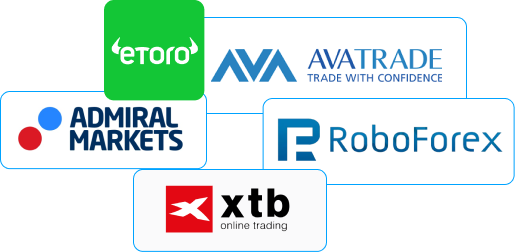Exchange-Traded Funds (ETFs) are investment funds that trade on stock exchanges, similar to stocks. ETFs hold a collection of assets like stocks, bonds, or commodities, allowing investors to diversify their portfolios without having to buy each asset individually. They are popular among investors due to their flexibility, lower costs, and ease of trading. ETFs are traded throughout the day on stock exchanges, with prices fluctuating just like individual stocks. This intraday trading allows investors to buy and sell ETFs at market prices, which can differ from the net asset value (NAV) of the underlying assets. ETFs can track various Indexes, sectors, or investment strategies, providing exposure to a wide range of markets and asset classes. Summarizing, ETFs are a versatile investment tool that offers diversification, flexibility, and cost-effectiveness. Whether you are a beginner or an experienced trader, ETFs can be a valuable addition to your investment portfolio.
What are ETFs and How to Invest?
There are several types of ETFs, each designed to meet different investment needs. Equity ETFs are the most common, holding shares of companies and often tracking a specific index like the S&P 500. Bond ETFs hold various types of bonds, providing income and diversification. Commodity ETFs invest in physical commodities like gold, silver, or oil, allowing investors to gain exposure to commodity markets without directly purchasing the physical asset.
Other types of ETFs include sector and industry ETFs, which focus on specific sectors like technology or healthcare, and international ETFs, which provide exposure to global markets. There are also inverse and leveraged ETFs, which are more complex and typically used by advanced traders looking to amplify returns or hedge against market declines.
In conclusion, understanding the different types of ETFs can help investors choose the right fund to match their investment goals and risk tolerance.
Explore our selection of ETFs trading courses, to start your trading journey today.
Or visit our Brokers comparison page to start trading now!
ETF prices are influenced by several factors, including the value of the underlying assets, supply and demand in the market, and broader economic conditions. The price of an ETF is generally close to the net asset value (NAV) of its underlying holdings, but it can fluctuate above or below this value based on market dynamics.
Market makers and authorized participants play a crucial role in maintaining the price of ETFs. They can create or redeem shares to keep the price of the ETF aligned with its NAV. Additionally, factors like interest rates, economic indicators, and investor sentiment can impact ETF prices, just as they do with individual stocks and bonds.
Summarizing, ETF prices are driven by a combination of the underlying asset values and market dynamics. Investors should monitor these factors to make informed trading decisions.
Explore our selection of ETFs trading courses, to start your trading journey today.
Or visit our Brokers comparison page to start trading now!
ETFs offer several benefits that make them an attractive investment option. Firstly, they provide diversification by holding a range of assets within a single fund, which can reduce risk compared to investing in individual securities. Secondly, ETFs generally have lower expense ratios than mutual funds, making them a cost-effective choice for investors. Additionally, ETFs are traded on stock exchanges, providing liquidity and flexibility as they can be bought and sold throughout the trading day.
Furthermore, ETFs offer transparency as they usually disclose their holdings daily, allowing investors to know exactly what assets they own. This transparency can help investors make informed decisions based on their investment strategy.
In conclusion, ETFs are beneficial due to their diversification, cost-efficiency, liquidity, and transparency. These features make them a popular choice for many investors.
Explore our selection of ETFs trading courses, to start your trading journey today.
Or visit our Brokers comparison page to start trading now!
While ETFs offer numerous benefits, they also come with certain risks. One key risk is market risk, as the value of an ETF can fluctuate based on the performance of its underlying assets. This means that if the market or sector the ETF tracks experiences a downturn, the ETF’s value can decline significantly.
Another risk is liquidity risk, especially for ETFs that focus on niche markets or have lower trading volumes. These ETFs may have wider bid-ask spreads, potentially impacting the cost of entering or exiting a position. Additionally, some ETFs use leverage or derivatives, which can amplify both gains and losses, increasing the risk associated with the investment.
In conclusion, while ETFs provide valuable investment opportunities, they also entail risks related to market fluctuations, liquidity, and the use of leverage. Investors should be aware of these risks and ensure that ETFs align with their overall investment strategy and risk tolerance.
Explore our selection of ETFs trading courses, to start your trading journey today.
Or visit our Brokers comparison page to start trading now!
Find Your Trusted Broker
Finding the right broker is essential for a successful trading experience. Our Brokers review section provides a comprehensive view, comparing top brokers based on fees, user experience, and customer support. Whether one is a beginner or an experienced trader, these recommendations help users choose a broker that meets their needs, ensuring they have the tools and resources to trade with confidence.


 en
en es
es